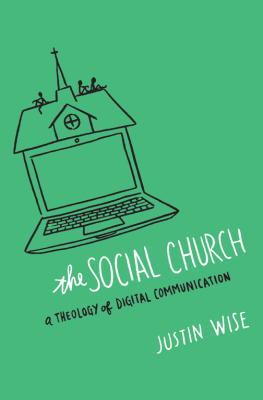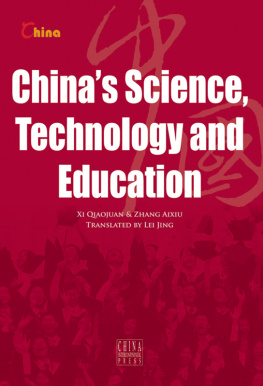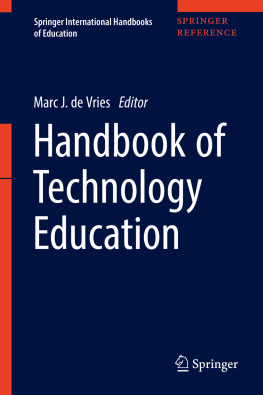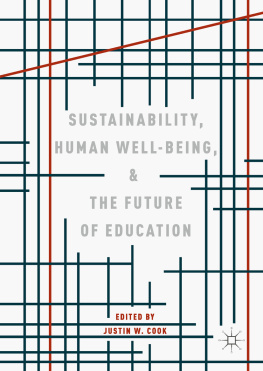Justin Reich - Why Technology Alone Can’t Transform Education
Here you can read online Justin Reich - Why Technology Alone Can’t Transform Education full text of the book (entire story) in english for free. Download pdf and epub, get meaning, cover and reviews about this ebook. publisher: Harvard University Press, genre: Politics. Description of the work, (preface) as well as reviews are available. Best literature library LitArk.com created for fans of good reading and offers a wide selection of genres:
Romance novel
Science fiction
Adventure
Detective
Science
History
Home and family
Prose
Art
Politics
Computer
Non-fiction
Religion
Business
Children
Humor
Choose a favorite category and find really read worthwhile books. Enjoy immersion in the world of imagination, feel the emotions of the characters or learn something new for yourself, make an fascinating discovery.

- Book:Why Technology Alone Can’t Transform Education
- Author:
- Publisher:Harvard University Press
- Genre:
- Rating:5 / 5
- Favourites:Add to favourites
- Your mark:
- 100
- 1
- 2
- 3
- 4
- 5
Why Technology Alone Can’t Transform Education: summary, description and annotation
We offer to read an annotation, description, summary or preface (depends on what the author of the book "Why Technology Alone Can’t Transform Education" wrote himself). If you haven't found the necessary information about the book — write in the comments, we will try to find it.
Justin Reich: author's other books
Who wrote Why Technology Alone Can’t Transform Education? Find out the surname, the name of the author of the book and a list of all author's works by series.
Why Technology Alone Can’t Transform Education — read online for free the complete book (whole text) full work
Below is the text of the book, divided by pages. System saving the place of the last page read, allows you to conveniently read the book "Why Technology Alone Can’t Transform Education" online for free, without having to search again every time where you left off. Put a bookmark, and you can go to the page where you finished reading at any time.
Font size:
Interval:
Bookmark:
FAILURE TO DISRUPT
Why Technology Alone Cant Transform Education
JUSTIN REICH
HARVARD UNIVERSITY PRESS
Cambridge, Massachusetts, and London, England
2020
Copyright 2020 by Justin Reich
ALL RIGHTS RESERVED
Jacket art: Leontura / Getty Images
Jacket design: Graciela Galup
978-0-674-08904-4 (cloth)
978-0-674-24966-0 (EPUB)
978-0-674-24967-7 (MOBI)
978-0-674-24968-4 (PDF)
The Library of Congress has cataloged the printed edition as follows:
Names: Reich, Justin, 1977 author.
Title: Failure to disrupt : why technology alone cant transform education / Justin Reich.
Description: Cambridge, Massachusetts : Harvard University Press, 2020. | Includes bibliographical references and index. | Identifiers: LCCN 2020012257
Subjects: LCSH: Educational technology. | Educational change. | Computer-assisted instructionEvaluation. | Internet in educationEvaluation. | MOOCs (Web-based instruction)Evaluation.
Classification: LCC LB1028.3 .R4375 2020 | DDC 371.33dc23
LC record available at https://lccn.loc.gov/2020012257
In the memory of Sheryl Blair, who loved schools as I do, and dedicated to Elsa, Adella, and Wren.
Reader, I am reviewing the copyedited manuscript of a book about technology and learning just as a pandemic has spread across the globe. By the time you download these words onto your favorite screen or, I pray, walk into your local bookstore to pick up a copy, the world will be different.
Schools and colleges are among the most durable and conservative of our social institutions. They prepare people for the future by connecting them with knowledge and wisdom from the past. Faculty make some accommodations for changing times, but for the most part, instructors teach how they were taught. Schools hold fast.
Even during historys watersheds, they hold fast. My colleagues in higher education are right now, for the most part, trying to teach as they did before, using video conferencing software to continue broadcasting their lectures. Most elementary school teachers have quickly and wisely given up on continuing a typical spring progression and shifted to enrichment, providing weblinks and worksheet packets that families can do at home to stay busy. Secondary school teachers are somewhere in between.
These heroic, hasty efforts by teachers are working unevenly. In educational institutions serving affluent students, where instructors can assume that students all own their own devices, have access to sufficient broadband, and live in homes stable enough to weather a global recession, things are proceeding reasonably well. Not so for schools that serve rural families and poor urban neighborhoods, or for community colleges, state institutions, and for-profit colleges serving working adults. In these settings, the best efforts of teachers are being overwhelmed by the barriers of technology access, employment disruption, hunger, homelessness, stress, and disease.
Many things that happen in schools simply cannot happen at a distance. In one of the first American news articles about the shift to online learning, a parent lamented that his six-year-old
In the early days of a lost semester, students, parents, and teachers are rapidly discovering the possibilities and limits of distance learning technologies. In the dark days of quarantine, technology provides some light for learning. Mo Willems, the brilliant childrens book author, is broadcasting weekly lessons about reading, writing, and drawing. Vast numbers of online courses and textbooks, from massive open online course (MOOC) providers and open educational resource repositories, are providing useful support to self-paced learning, especially for older learners. As children miss months of school, the loss of math instruction is one area where students face lasting detrimental effects on academic progress, and by good fortune, adaptive math learning software is one of the most well-developed categories in the field of education technology.
For all these bright points, however, it is also obvious that the gains of learning technologies are substantially offset by the loss of schools as places for camaraderie, shelter, nutrition, social services, teaching, and learning. When all the bars closed, people could still find companions and dates (even against CDC recommendations) on Tinder, Bumble, and Grindr. If the printing presses were to stop, people could still get their news online. But parents, students, administrators, governments, and pundits who thought that schools could simply pivot to online learning and finish out the semester are learning in the early days of the pandemic that the social and social service functions of schools are intimately tied to their learning outcomes.
In what follows, I attempt to explain why learning technologies work in some situations but not others, and for some people but not others. I hope that the explanations that I developed in a period of relative stability provide some insight in the wake of a terrible pandemic. I hope it becomes clear why a steady drumbeat of techno-optimism about learning technology over the last decade might lead people to believe that a first-grade teacher could remotely instruct twenty or so six-year-olds. I expect that the world will still be wrestling with COVID-19 as this book is released, and I hope that what follows can help educators and the public understand the places where learning technologies are most likely to be of service.
We will have much to rebuild, and perhaps learning technology can help. But online learning wont be an effective replacement for our old system. Rather, the best possible future will be one where we recognize the incredible importance of our formal education systems to the social order, and we provide these systems with adequate funding, support, and respect. Our learning technologies are only as strong as the communities of educators who guide their use.
J. R., March 21, 2020
T HE MUST-HAVE TOY OF THE 2013 holiday season was Rainbow Loom. A simple plastic board with vertical pegs, Rainbow Loom came packaged with hundreds of small, colorful rubber bands that children could weave across the pegs to make bracelets and charms. Press coverage celebrated Rainbow Loom as a back-to-basics craft toy. The Toronto ascendant, Santa brought millions of children a toy that would finally get kids to put down those damned devices.
Except it didnt. Rainbow Loom wasnt an antidote to screens; rather, screens were integral to playing with the loom. Because some of the things children could make with Rainbow Loom were quite intricate, the easiest way to learn a new design was through a video tutorial.
In 2013, process of weaving each band, the video moves slowly through new techniques and speeds up through repetitive motions. Within two years, the video had been viewed more than thirty million times.
The very first Rainbow Loom videos were created by the niece and daughters of Cheong Choon Ng, the inventor of the loom. Ng recognized early on that teaching and learning would be essential to the marketing
For those with access to global online networks, now is the greatest time in history to be a learner. Never before have learners had such incredible access to resources and communities of tutors and apprentices. Whether they want to learn to play guitar, brew beer, identify birds, translate Cicero, throw a javelin, intubate a trauma victim, integrate a function, detonate a bomb, program in Javascript, or become a better teacher, there are online classes, tutorials, forums, and networks full of people who are excited to teach and excited to learn. If youve ever signed up for an online class, downloaded an educational app, or watched a video about how to unclog a toilet, you are part of that network.
Font size:
Interval:
Bookmark:
Similar books «Why Technology Alone Can’t Transform Education»
Look at similar books to Why Technology Alone Can’t Transform Education. We have selected literature similar in name and meaning in the hope of providing readers with more options to find new, interesting, not yet read works.
Discussion, reviews of the book Why Technology Alone Can’t Transform Education and just readers' own opinions. Leave your comments, write what you think about the work, its meaning or the main characters. Specify what exactly you liked and what you didn't like, and why you think so.










